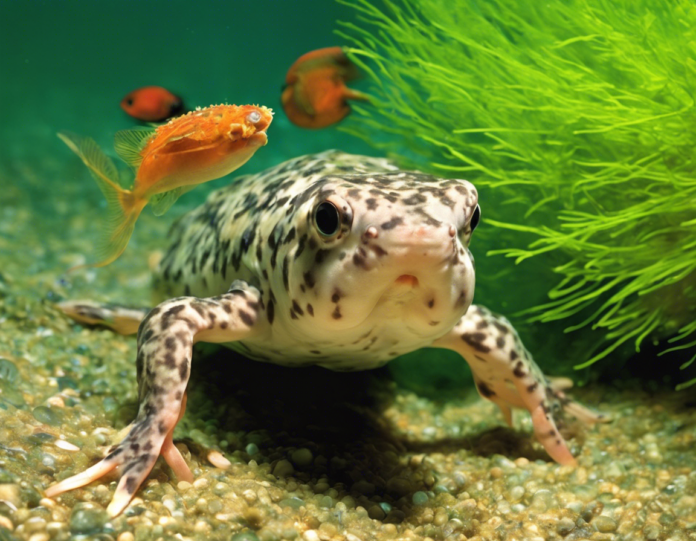Introduction
When we think about life on Earth, we often picture the diverse ecosystems that exist both on land and in water. Terrestrial and aquatic environments each host a wide variety of organisms, each adapted to thrive in their specific habitat. While both types of environments have their own unique advantages and challenges, terrestrial organisms have developed certain characteristics that provide them with several advantages over their aquatic counterparts.
Habitat Stability
One of the key advantages of terrestrial organisms is the relative stability of their environment compared to aquatic organisms. Land environments tend to experience less drastic changes in factors such as temperature, salinity, and water availability. This stability allows terrestrial organisms to more easily regulate their internal conditions and adapt to changes in their surroundings.
Access to Resources
Terrestrial organisms also have greater access to important resources such as sunlight and oxygen. Photosynthesis, a process crucial for many plants, algae, and bacteria, requires sunlight and is much more efficient in terrestrial environments where light is abundant. Similarly, terrestrial organisms have easier access to atmospheric oxygen, which is essential for respiration and energy production.
Greater Diversity of Habitats
While aquatic environments cover about 71% of the Earth’s surface, terrestrial environments offer a greater variety of habitats. From deserts to forests, grasslands to mountains, terrestrial ecosystems are incredibly diverse. This variety allows terrestrial organisms to occupy a wide range of niches and adapt to different environmental conditions.
Mobility and Adaptability
Terrestrial organisms generally exhibit higher levels of mobility and adaptability compared to aquatic organisms. Many terrestrial species can easily move across different types of terrain, allowing them to find food, shelter, and mates more efficiently. Additionally, terrestrial organisms have evolved a wide array of adaptations to cope with challenges such as drought, extreme temperatures, and predators.
Effective Communication
Communication is essential for many aspects of an organism’s life, from finding a mate to warning others of potential dangers. Terrestrial organisms have developed various means of communication, including visual signals, vocalizations, and chemical signals. The ability to communicate effectively has contributed to the success of many terrestrial species in establishing social structures and coordinating behaviors.
Protection from Predators
While terrestrial organisms face threats from predators, they also have more opportunities to escape or defend themselves. Many land-dwelling species have evolved mechanisms such as camouflage, warning coloration, and defensive structures to deter predators. In contrast, aquatic organisms often have fewer options for protection, as the medium they inhabit can limit their ability to escape or hide.
Nutrient Recycling
Terrestrial ecosystems are often more efficient at nutrient recycling compared to aquatic ecosystems. Decomposers such as fungi and bacteria play a crucial role in breaking down organic matter, returning nutrients to the soil for plants to use. This recycling process is essential for maintaining the health and fertility of terrestrial habitats.
Frequently Asked Questions (FAQs)
1. Why are terrestrial organisms more diverse than aquatic organisms?
Terrestrial environments offer a wider range of habitats and niches, allowing for the evolution of a greater diversity of species. Additionally, terrestrial organisms face different challenges and selection pressures compared to aquatic organisms, leading to unique adaptations and species interactions.
2. How do terrestrial organisms access water in arid environments?
Many desert-dwelling organisms have evolved specialized adaptations to conserve water, such as efficient kidneys, water-storing tissues, and behavioral strategies like nocturnal activity to minimize water loss. Some plants have deep root systems to access underground water sources.
3. Do terrestrial organisms have any disadvantages compared to aquatic organisms?
While terrestrial organisms have several advantages, they also face challenges such as land degradation, habitat loss due to human activities, and limited access to certain resources. Aquatic organisms, on the other hand, may have easier access to nutrients and can disperse more easily over long distances.
4. How do terrestrial organisms cope with extreme temperatures?
Terrestrial organisms have evolved various strategies to cope with extreme temperatures, including behavioral adaptations like seeking shade or huddling for warmth, physiological adaptations such as producing antifreeze proteins, and anatomical features like insulating fur or feathers.
5. Can terrestrial organisms live in aquatic environments?
Some terrestrial organisms, such as certain insects and amphibians, have adapted to live part of their life cycle in aquatic environments. However, these organisms are typically specialized for specific niches within aquatic ecosystems and may not thrive outside of their adapted habitats.

